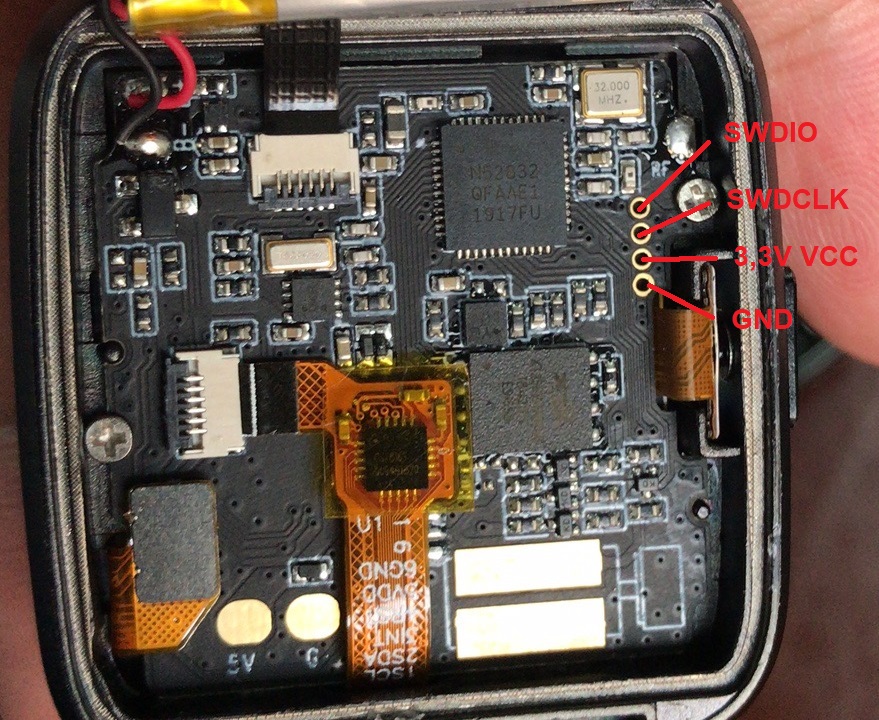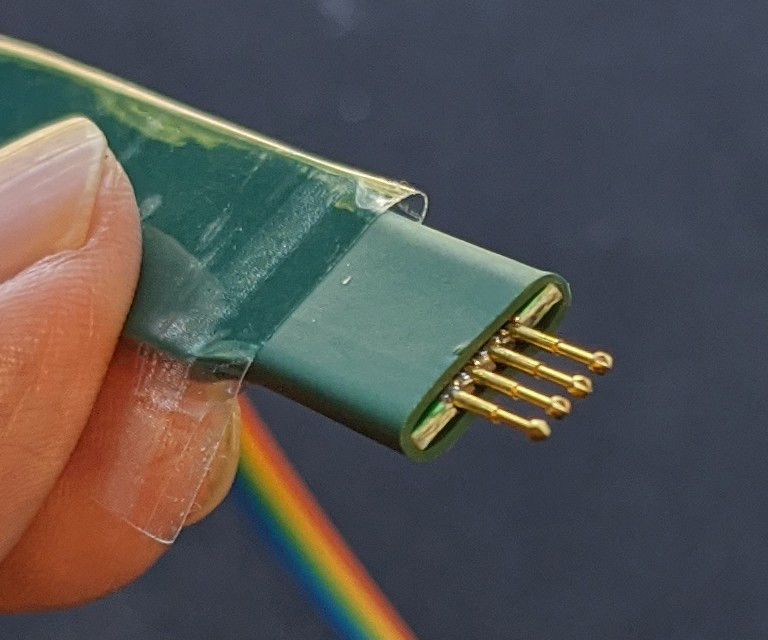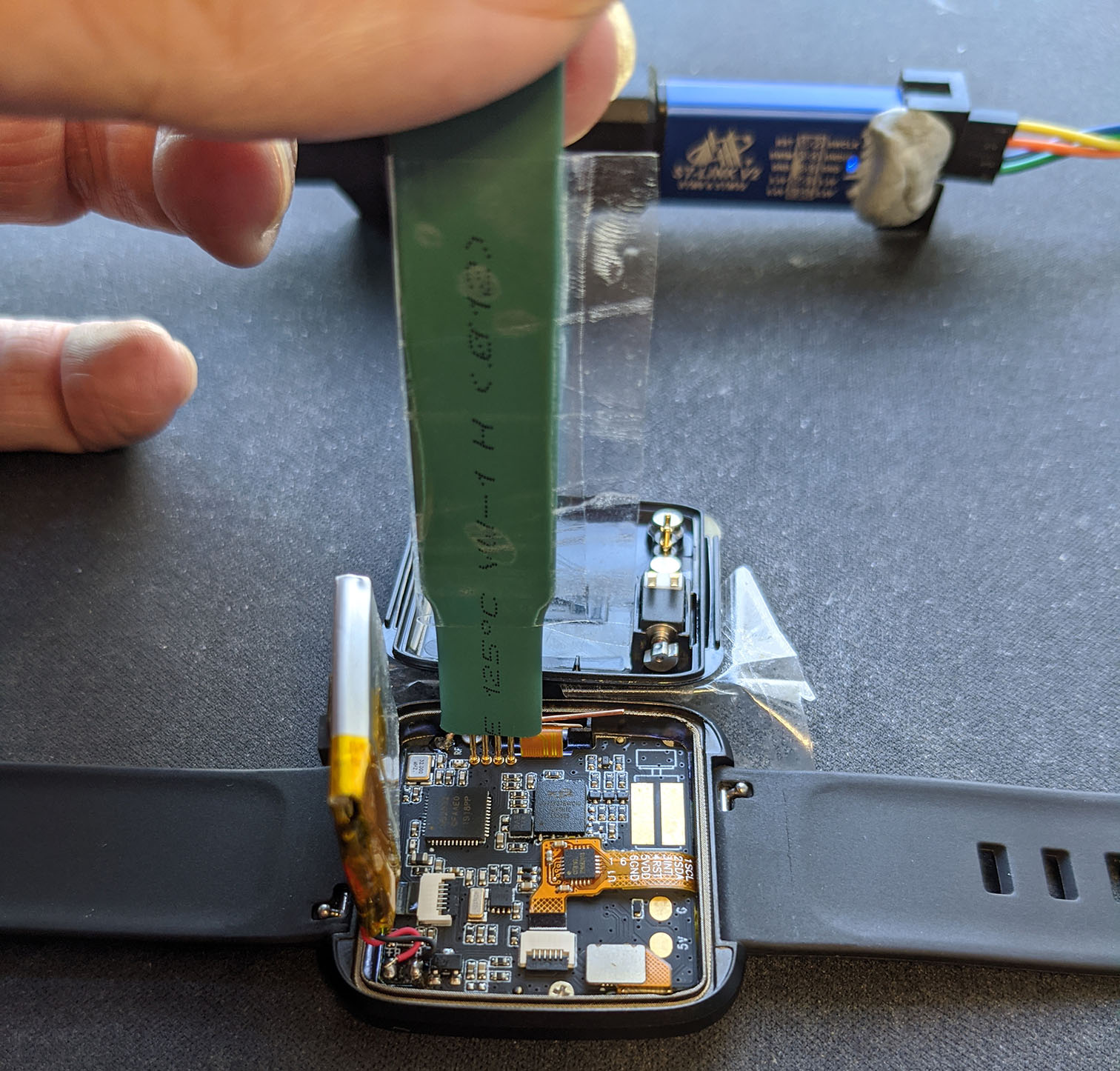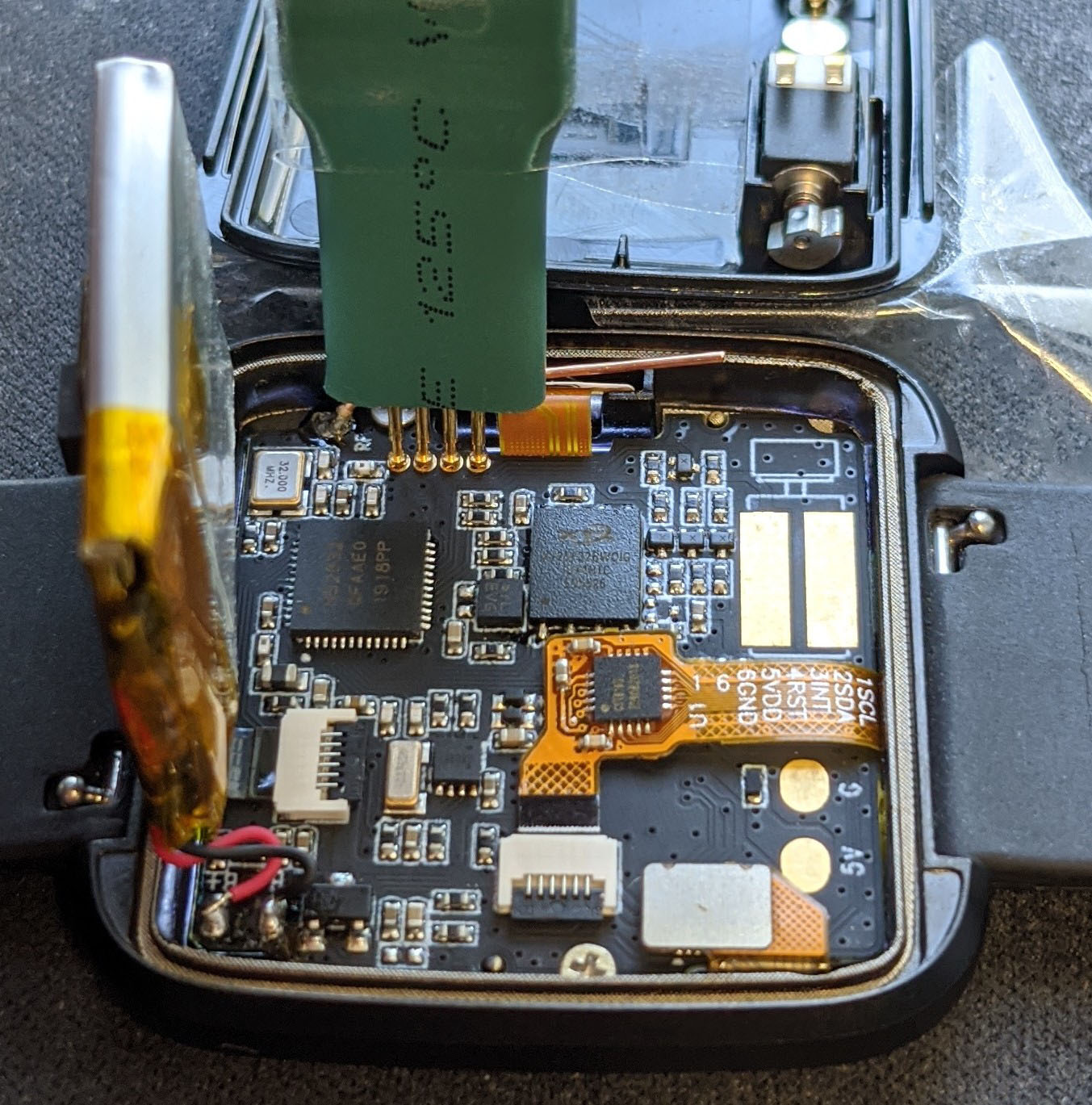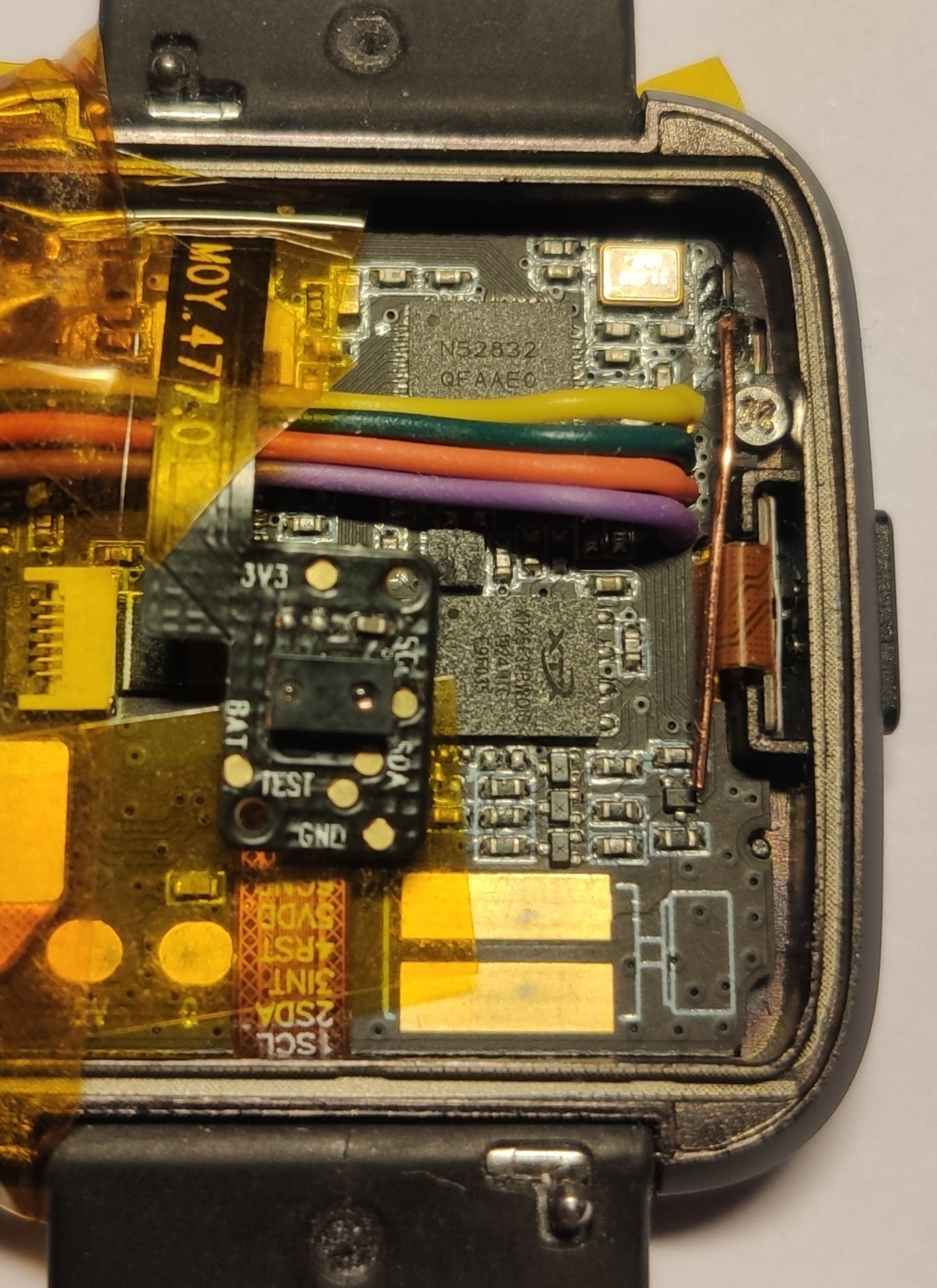Difference between revisions of "PineTime devkit wiring"
(Adding pogo pins) |
|||
| Line 21: | Line 21: | ||
[[File:PineTime_SWD_location.jpg|400px]] | [[File:PineTime_SWD_location.jpg|400px]] | ||
== Pogo Pins connection | == Pogo Pins connection == | ||
To connect the SWD port with PineTime Pogo Pins... | To connect the SWD port with PineTime Pogo Pins... | ||
Revision as of 03:23, 21 September 2020
This article will help you get up to scratch about how to connect your PineTime to your hardware debugger and what to keep in mind.
The devkit comes with a set of wires you can use for connecting your programmer to the SWD pins. Most people use friction to make contact with the programming cable. Soldering the wires to the pinetime is not recommended, especially if you don't have a temperature-controlled iron and good confidence that you can do it - the thin PCB is fragile and easy to break.
Current amount of dead PineTimes (or ruined bundled programming connectors) due to attempted soldering is 4 (update this number when suitable).
Read this about the battery:
You have two choices:
a) If you have a soldering iron and you're confident with using it, it is recommended that you remove the battery until you actually need it. Doing so avoids unnecessary charge cycles and strain on it. It can also potentially prevent issues with your watch not resetting properly or backfeeding power into your debugger-programmer. There's also the option that you just connect a microswitch between the battery's positive side and the PineTime, just make sure to isolate your connections so it doesn't short out against anything.
b) If you do not have a soldering iron or you're not confident with using it, don't disconnect the battery if you ever plan on using it. Don't bend the wires too much as they're thin, you won't be able to reconnect it. Keep in mind that keeping it connected during development will probably reduce the lifetime of the battery. Small load on the 3.3V pin is probably fine, but it will drain the battery empty. Having the battery connected when it's not empty will also very likely backfeed power into your 3.3V pin - don't cause short circuits! don't leave the wire dangling!
SWD Pinout
The devkits have exposed SWD pins for flashing and debugging.
The pinout is:
Pogo Pins connection
To connect the SWD port with PineTime Pogo Pins...
TODO
Soldered wires example
Before attempting this, make sure you have a good soldering iron and you're confident enough in using it on such small PCBs.
Raspberry Pi connection
// TODO:
